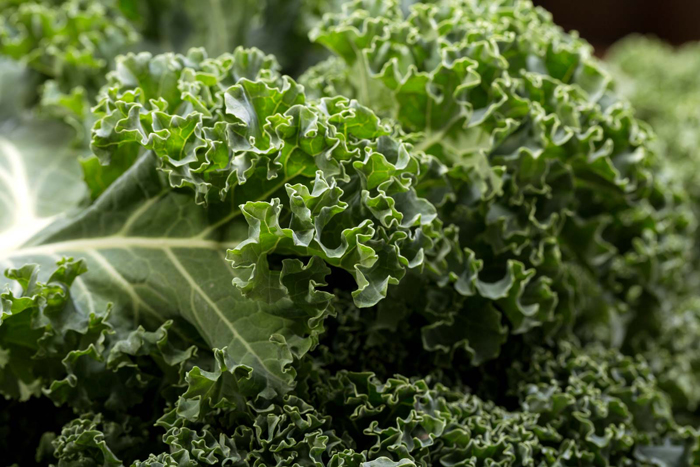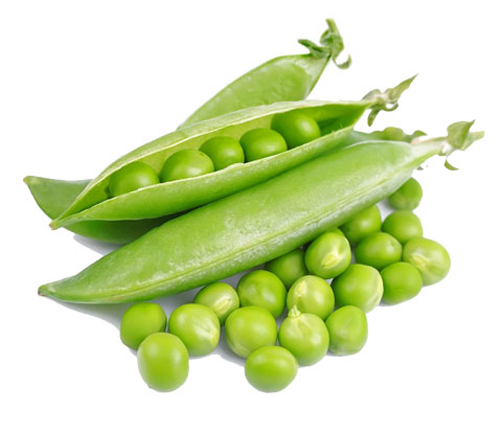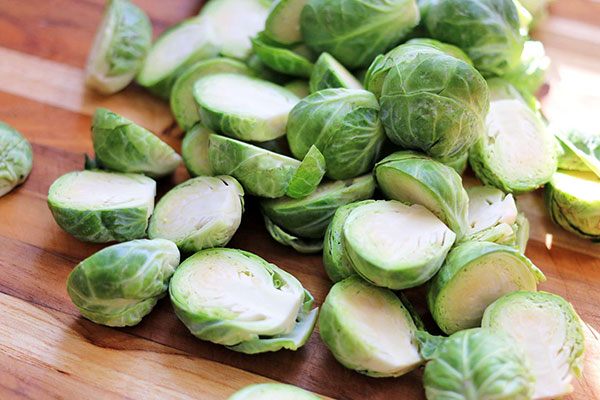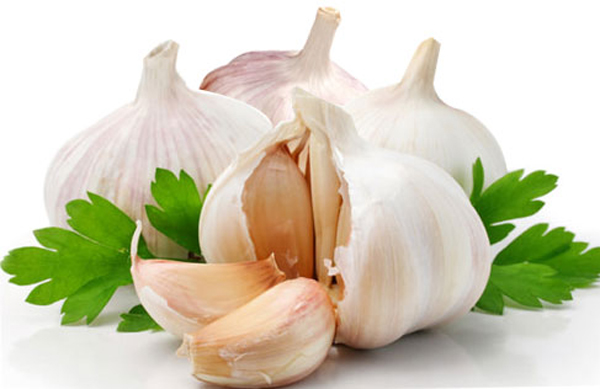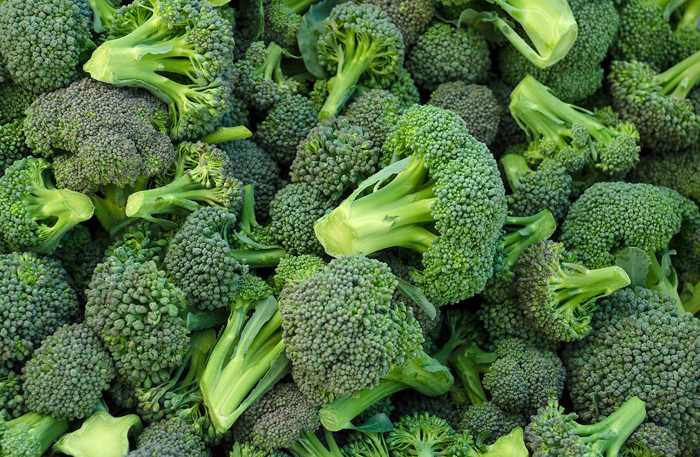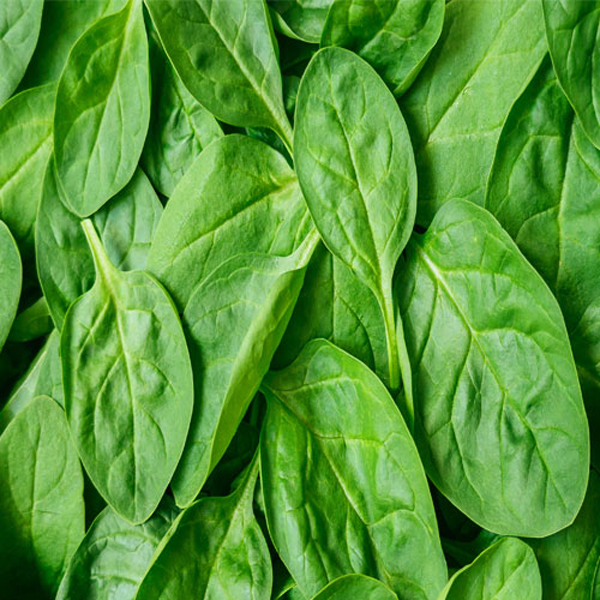List Of Vegetables
- Absinthe Interesting Facts

- Ahipa Nutritional Values

- Akudjura Various Uses

- Amaranth Health Benefits

- American Pokeweed

- Aniseed Myrtle Properties

- Aonori Summary

- Apple Mint Uses

- Arame Medicinal Uses

- Arracacha Nutritional Value

- Artichoke Nutrition Values

 Arugula Health Summary
Arugula Health Summary- Asarabacca Various Uses

- Asparagus Healthy Eating

- Avocado Nutrition Benefits

- Bamboo shoots

- Basil Nutrition Guide

- Beans Beneficial Properties

- Bean sprouts

- Beet Greens Nutrition Facts

- Beets Health Benefits

- Bishop’s weed Various Uses

- Bitter Gourd Nutritional Value

- Black Beans Benefits

- Blue Fenugreek Various Uses

- Boldo Medicinal Values

- Bok Choy Health Benefits

- Borage Greens Medicinal Purposes

- Bottle Guard Aspects

- Broccoli Health Properties

- Broccoflower Nutrition Guide

- Broccoli Raab Nutrition Values

- Broadleaf Arrowhead Health Benefits

- Brussel sprouts Nutrition Summary

- Burdock Health Benefits

- Cabbage Health Facts

- Camas Health Benefits

- Cantaloupe Nutrition Guide

- Canella Uses

- Carrots Health Properties

- Cardoon Nutritional Value

- Carola Summary

- Cassava Health Properties

- Catnip Oil Benefits

- Catsear Flower Uses

- Celeriac Nutritional Value

- Celery Health Benefits

- Chard(Swiss & red)Nutrition Values

- Chaya Nutrition Facts

- Chervil Properties

- Good King Henry

- Chickweed Health Benefits

- Chickpeas Nutrition Summary

- Chile peppers Health Benefits

- Chinese Artichoke Uses

- Chinese Broccoli Nutritional Valu

- Chinese cabbage Nutrition Values

- Chinese Mallow Aspects

- Chives Nutrition Guide

- Chrysanthemum Leaves Uses

- Cicely Unknown Benefits

- Cinnamon Myrtle Medicinal Value

- Collards Nutrition Facts

- Common Purslane Benefits

- Corn Health Values

- Corn Salad Interesting Facts

- Cress Medicinal Values

- Cucumber Health Benefits

- Culantro Leaves

- Curry Leaf Tree Origin

- Collard Greens Nutrition Facts

- Dabberlocks Interesting Facts

- Dandelion Health Benefits

- Dill Health requirements

- Drumstick Nutritional Value

- Dulse Health Benefits

- Earthnut Pea Properties

- Eggplant Nutrition Guide

- Elephant Foot yam Health Benefits

- Elephant Garlic Uses

- Endive Medicinal Properties

- Ensete Health Benefits

- Epazote Properties

- Fat Hen Interesting Facts

- Fingerroot Uses

- French Sorrel Health Facts

- Garlic Nutrition Values

- Gim seaweed Uses

- Ginger Flower Properties

- Ginger Medicinal Values

- Golden Samphire Aspects

- Greater Plantain Medicinal Uses

- Green onions Health Facts

- Green peas Nutrition Values

- Hijiki Nutritional Aspects

- Holy Basil Leaves

- Horseradish Health Benefits

- Onions Nutrition Guide

- Sea Beet Aspects

- Sea Lettuce Health Benefits

- Yam Nutritional Value

- Yarrow Medicinal Uses

- Zucchini Health Guide

- Veggies by seasons

- Veggies did you know??

- Comparison of veggies!!!

- Veggies and it's origin

- Comical View of Veggiess

- Categories of veggies

- Top Veggiess 100 To 91
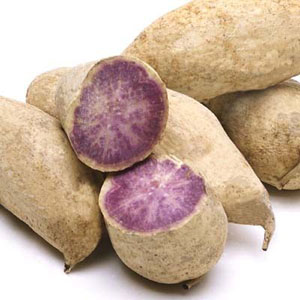
- Top Veggiess 90 To 81
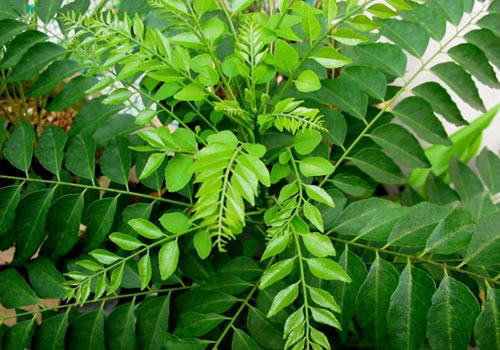
- Top Veggiess 80 To 71
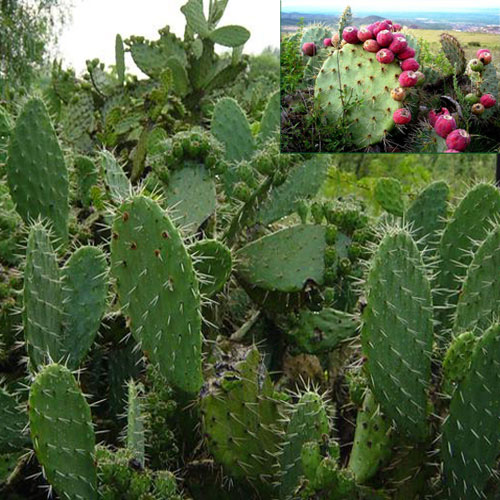
- Top Veggiess 70 To 61
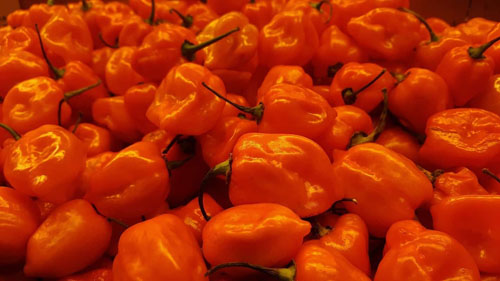
- Top Veggiess 60 To 51
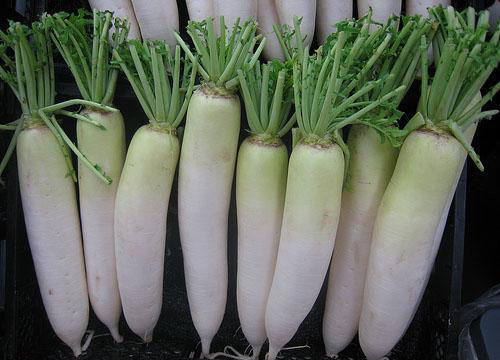
- Top Veggiess 50 To 41

- Top Veggiess 40 To 31
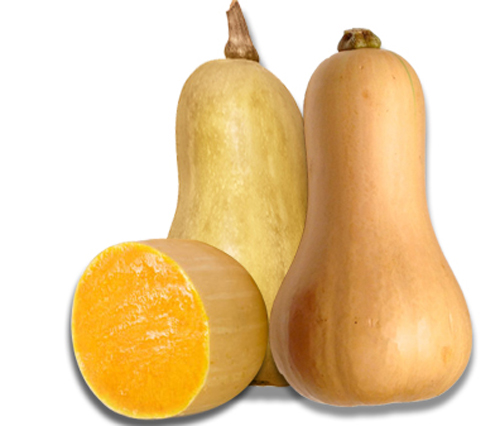
- Top Veggiess 30 To 21

- Top Veggiess 20 To 11
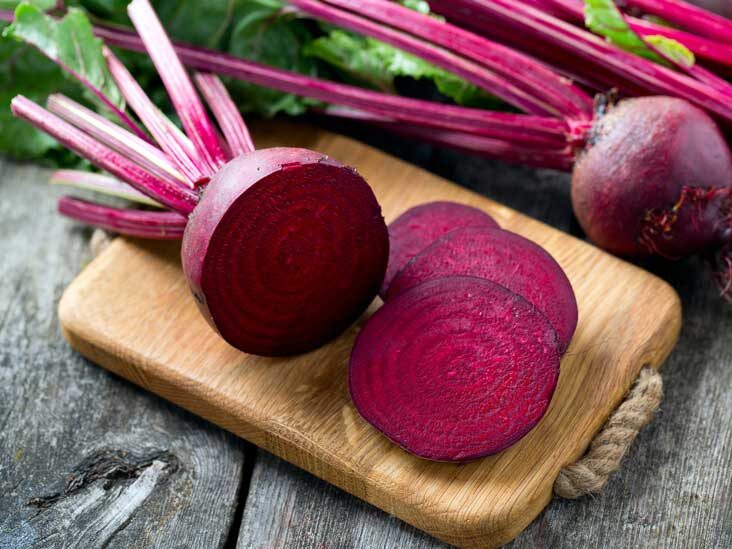
- Top Veggiess 10 To 01
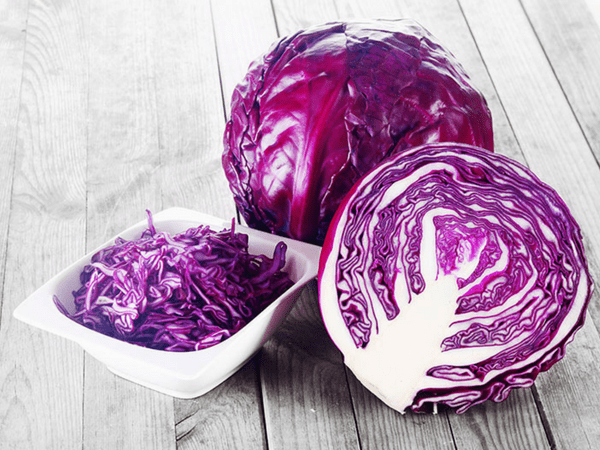
Veggie Picks
Top Veggiess 10 To 01 For Health Benefits
10. Red cabbage
Red cabbage is a variety of cabbage with dark purple leaves. It has crunchy leaves similar to cabbage with peppery and earthy flavor. It is particularly rich in Vitamin C and A. Red cabbage also contains a moderate amount of Vitamin B6, potassium, magnesium, calcium and iron. Red cabbage has a higher amount of antioxidants when compared to green cabbage to fight inflammation and reduce discomfort. It promotes healthy bones and heart health. The folate present in red cabbage helps to produce red blood cells. It may protect against certain cancer and some chronic disease.
Red cabbage is incredibly versatile to add in your diet.
- The color of the red cabbage leaves is in red or purple.
- The color of the leaves will change according to the condition of the soil.
- The color of the cabbage will be red when the plant grows on acidic soil, purple when it grows in neutral soil and greenish-yellow when it grows alkaline soil.
- It is generally found in Northern Europe, throughout the Americas and in China.
- During the process of cooking the color will turn blue.
- If the people want to retain the red color they have to add vinegar or acidic fruit to the pot.
| Principle | Nutrient Value | Percentage of RDA |
|---|---|---|
| Energy | 25 kcal | 1% |
| Carbohydrates | 5.8 g | 4% |
| Protein | 1.3 g | 2% |
| Total Fat | 0.1 g | 0.50% |
| Cholesterol | 0 mg | 0% |
| Dietary Fiber | 2.50 mg | 6% |
| Vitamins | ||
| Folates | 53 µg | 13% |
| Niacin | 0.234 mg | 1.50% |
| Pantothenic acid | 0.212 mg | 4% |
| Pyridoxine | 0.124 mg | 10% |
| Riboflavin | 0.040 mg | 3% |
| Thiamin | 0.061 mg | 5% |
| Vitamin A | 98 IU | 3% |
| Vitamin C | 36.6 mg | 61% |
| Vitamin K | 76 µg | 63% |
| Electrolytes | ||
| Sodium | 18 mg | 1% |
| Potassium | 170 mg | 3.50% |
| Minerals | ||
| Calcium | 40 mg | 4% |
| Iron | 0.47 mg | 6% |
| Magnesium | 12 mg | 3% |
| Manganese | 0.160 mg | 7% |
| Phosphorus | 26 mg | 3.50% |
| Zinc | 0.18 mg | 1.50% |
| Phyto-nutrients | ||
| Carotene-α | 33 µg | — |
| Carotene-ß | 42 µg | — |
| Lutein-zeaxanthin | 30 µg | — |
- It grows well when the soil is well fertilized.
- This cabbage is rich in energy, carbohydrates and vitamins and minerals.
- It is added as an ingredient in salads, soups and coleslaw.
- It can be consumed after cooking.
- It can be served as an accompaniment to roast goose.
- Red cabbage's rich in Vitamin A and iron.
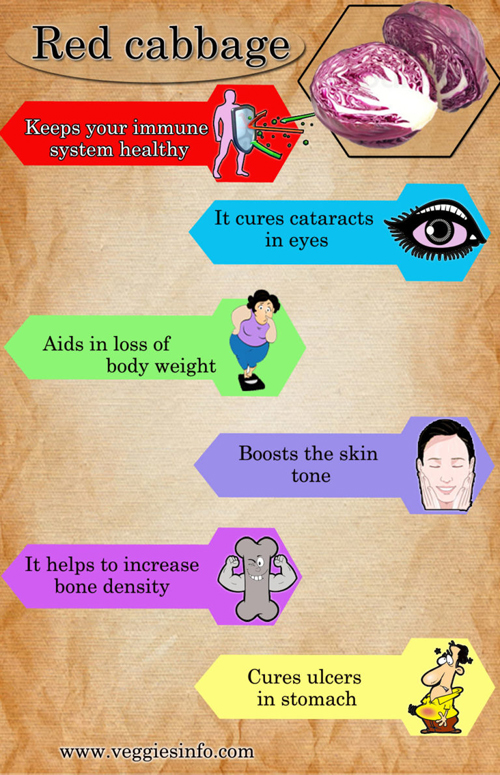
09. Swiss chard
Swiss chard is a leafy vegetable with tender green leaf with fibrous and crunchy stalk. The leaf ranges from dark green to reddish green with red, white or yellow stalk. It has a bitter flavor similar to beets and spinach. It has a plentiful amount of Vitamin K, A, C and E. it is also a good source of magnesium, manganese, copper, potassium, calcium and iron. It is loaded with disease-fighting antioxidants to inhibit certain chronic diseases. Swiss chard promotes our heart health, skeletal health and has a nutrient essential for blood clotting. It benefits heart health and promotes weight loss.
It can be boiled, steamed and roasted to add in your diet.
- Great source of Vitamin K, A and C.
- Contains copper, calcium, sodium, potassium, iron, manganese, and phosphorus.
- 100 g of raw leaves contain only 19 calories.
- Chard is one of the excellent vegetable sources for vitamin-K; 100 g provides about 700% of recommended intake.
- Vitamin K has potential role bone health by promoting osteotrophic (bone formation and strengthening) activity.
- Adequate vitamin-K levels in the diet help limiting neuronal damage in the brain; thus, has established role in the treatment of patients suffering from Alzheimer's disease.
- Maintain strong and healthy bones.
- Boost immune system.
- Preventing osteoporosis.
- Managing diabetes.
Consuming chard can be proven to be highly nourishing for the body. A cup of boiled Swiss chard that is 175 grams contains only 35 calories which proves it to be a low calorie diet food. It has a very high content of vitamins especially vitamin K. Good bone health is aided by good diet rich in Vitamin K, K1, and K2; they protect the bones from breaking and also prevent it from excessive production of osteoclast that is a cell that breaks down bones. The next time you feel weak in your bones you know what your body needs. Leafy vegetables like chard are rich in phyto-nutrient a nutrient that is derived from plants and it has a unique anti inflammatory property that reduces health risk such as blood pressure problems and prevents the body from allergies. Chard is a holy food for diabetic patients as it aids in production of insulin in the body thus controlling blood sugar levels. Healthy eyes and good vision has become a rare these days thanks to the over indulgence in gadgets. Carotenoids aid in developing good vision and this is found in abundance in chard.Swiss chard is rich source of oxalic acid which reduces absorption of calcium and induces formation of crystals of calcium oxalates (type of kidney stones) in the urinary tract of susceptible individuals. Also, Swiss chard is not recommended for people on the anticoagulant therapy (because of the high level of vitamin K in the plant). Swiss chard is ideal for all people who would like to lose some weight because it contains few calories and fats.
| Principle | Nutrient Value | Percentage of RDA |
|---|---|---|
| Energy | 1% | 19 Kcal |
| Carbohydrates | 3.74 g | 3% |
| Protein | 3.27 g | 6% |
| Total Fat | 0.20 g | 1% |
| Cholesterol | 0 mg | 0% |
| Dietary Fiber | 1.6 g | 4% |
| Vitamins | ||
| Folates | 14 µg | 4.5% |
| Niacin | 0.400 mg | 2% |
| Pantothenic acid | 0.172 mg | 3% |
| Pyridoxine | 0.99 mg | 7.5% |
| Riboflavin | 0.090 mg | 7% |
| Thiamin | 0.040 mg | 3% |
| Vitamin A | 6116 IU | 204% |
| Vitamin C | 30 mg | 50% |
| Vitamin E | 1.89 mg | 12.5% |
| Vitamin K | 830 µg | 692% |
| Electrolytes | ||
| Sodium | 213 mg | 14% |
| Potassium | 379 mg | 8% |
| Minerals | ||
| Calcium | 51 mg | 5% |
| Copper | 0.179 mg | 20% |
| Iron | 1.80 mg | 22.5% |
| Magnesium | 81 mg | 20% |
| Manganese | 0.366 mg | 16% |
| Phosphorus | 46 mg | 6% |
| Selenium | 0.9 µg | 1.5% |
| Zinc | 0.39 mg | 3% |
| Phyto-nutrients | ||
| Carotene-ß | 3647 µg | — |
| Carotene-a | 45 µg | — |
| Lutein-zeaxanthin | 11000 µg | — |
Chard is often used as a substitute to spinach but it has a whole lot of recipes based on it. Used for raw consumption in salads, chard adds the vibrant colour and flavoursome taste to the salad bowl during hot summers as it is refreshingly crunchy in texture. Egyptians enjoy their chard cooked in a broth with coriander. Apart from all this cold soups, stir fries and steaming it are the most common ways of cooking chard. This leafy vegetable is also cooked with feta cheese and is eaten as an accompaniment to omelettes. This food may not suit every individual due to the following reasons; chard consist of high oxalate content and it is a strict no-no to anyone ailing from kidney problems as consuming this might aggravate their health condition further. One needs to check their resistance towards oxalate before binging into this veggie delight.
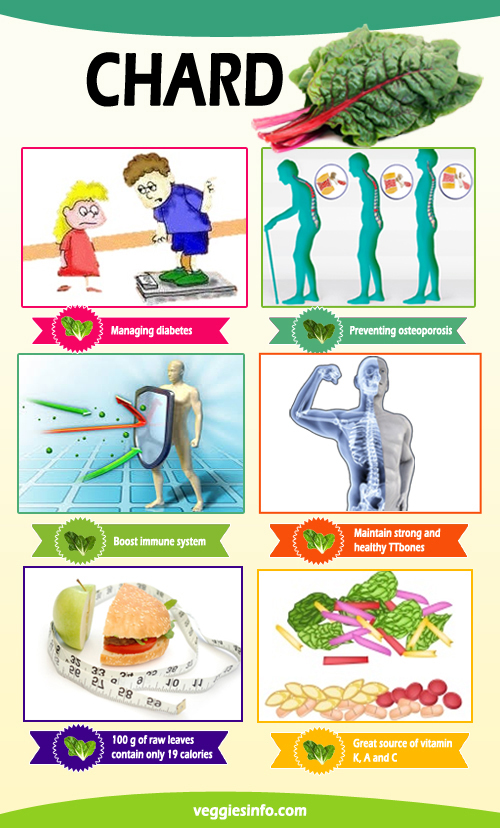
08. Kale
Kale is a green or purple leafy vegetable that has either a smooth or a curly shape with fibrous stalk. Scots kale or curly kale is a common type of kale that has green and curly leaves and a fibrous stem. It is a popular cruciferous vegetable like cabbage and collard greens. It is enriched with Vitamins K, A, and C, copper, manganese, potassium and Vitamin B6. Kale contains powerful antioxidants to benefit your overall body and may reduce the risk of heart diseases. The compounds present in kale inhibit the risk of macular degeneration and cataracts. As it is low in calories, it is effectively used to reduce weight.
Kale is popularly enjoyed in salads, kale chips and makes an excellent main course.
- A single cup of raw kale contains Vitamin A 206% Vitamin K 684% Vitamin C 134% Vitamin B6 9% .
- Manganese 26% Calcium 9% Copper 10% Potassium 9% Magnesium 6%.
- It has more vitamin C than an orange.
- Great anti-inflammatory food.
- Risk-lowering benefits for cancer.
- Raw kale still has cholesterol-lowering ability.
- Detoxification and Weight loss.
- Strengthen Your Immune System.
- Healthier Hair, Skin & Nails.
- Kale is rich in phytonutrients, Low in Calories.
Kale has been Cultivated for More than 2,000 Years.popular in Europe during the Roman time and Middle Ages, it Arrived in the United States in the 17th Century.`
Kale belongs to the cabbage family which is well known for its high nutrition value; a cup of raw kale consists of 33 calories and 3 grams of protein. This leafy green is rich vitamin A, Vitamin C and Vitamin K. Vitamin A is essential for good eyesight, aging adults should consider adding kale to their daily diets. Vitamin C that is rich in anti oxidants and it helps in smooth functioning of the body cells. Kale is also known as the richest source of vitamin c as kale consist 3 times more proteins than spinach and more vitamin c than an orange. Kale is a cruciferous plant and like its relative plants it is vested with anti cancer properties and anti oxidant properties that prevents the body from falling prey to life endangering diseases such as breast cancer, prostate cancer and colon cancer. Apart from hosting these vital nutrients kale also has the benefit of various other nutrients such as iron, manganese, magnesium, lutein and zeaxanthin are a few to mention.
| Principle | Nutrient Value | Percentage of RDA |
|---|---|---|
| Energy | 50 Kcal | 2.5% |
| Carbohydrates | 10.01 g | 8% |
| Protein | 3.30 g | 6% |
| Total Fat | 0.70 g | 3% |
| Cholesterol | 0 mg | 0% |
| Dietary Fiber | 2.0 g | 5% |
| Vitamins | ||
| Folates | 29 µg | 7% |
| Niacin | 1.000 mg | 6% |
| Pantothenic acid | 0.091 mg | 1.5% |
| Pyridoxine | 0.271 mg | 21% |
| Riboflavin | 0.130 mg | 10% |
| Thiamin | 0.110 mg | 9% |
| Vitamin A | 15376 IU | 512% |
| Vitamin C | 120 mg | 200% |
| Vitamin K | 817 µg | 681% |
| Electrolytes | ||
| Sodium | 43 mg | 3% |
| Potassium | 447 mg | 9.5% |
| Minerals | ||
| Calcium | 135 mg | 13.5% |
| Copper | 0.290 mg | 32% |
| Iron | 1.70 mg | 21% |
| Magnesium | 34 mg | 8.5% |
| Manganese | 0.774 mg | 34% |
| Phosphorus | 56 mg | 8% |
| Selenium | 0.9 µg | 1.5% |
| Zinc | 0.44 mg | 4% |
| Phyto-nutrients | ||
| Carotene-β | 9226 µg | — |
| Crypto-xanthin-β | 0 µg | — |
| Lutein-zeaxanthin | 39550 µg | — |
As kale aids in weight loss it is highly consumed by weightwatchers and there are numerous ways to prepare kale. Add raw kale in salads, use it instead of lettuce in sandwiches, sautéed kale in olive oil and garlic and serve it alongside a steak or turkey.It is used to make pesto sauce for pasta; it is also used in a pureed form and served as a cold soup.It tossed with watermelon and mozzarella cheese makes it a nice afternoon snack.
It might be less known to people but its gaining a lot of popularity in culinary world because of its robust flavours and health benefits.
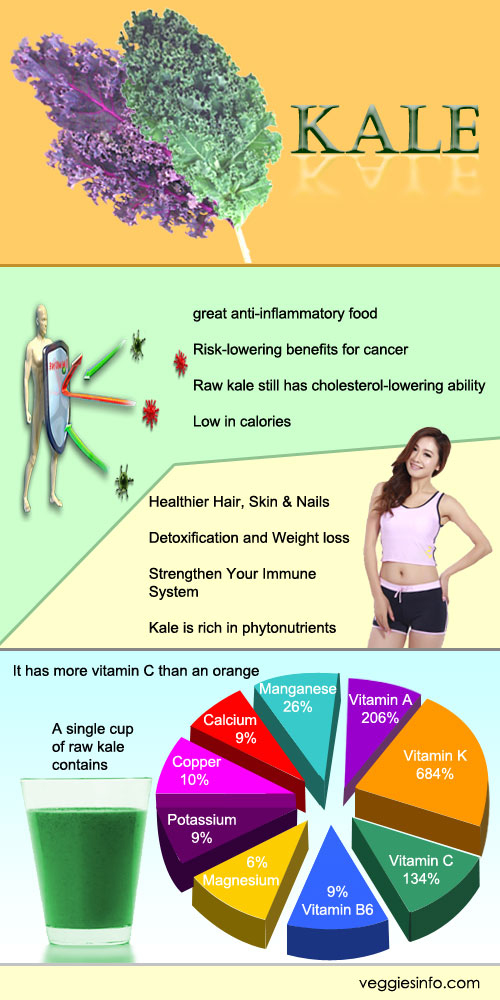
07. Green peas
The green pea is the small, spherical seed of the pisumsativum plant. Peas are also available in different varieties including yellow, purple and black-eyed pea. It has a sweet and grassy flavor with a starchy texture. Peas have a higher level of protein when compared to other vegetables. It is a good source of fiber, Vitamin A, Vitamin K, iron and folate. Green peas also contain thiamine, manganese, carbohydrates and phosphorus. The compounds in the green peas promote digestion, control blood sugar level and prevent the risk of chronic diseases.
Peas are boiled, canned, steamed to be used in many dishes.
- Good sources of protein, vitamins, and soluble as well as insoluble fiber.
- Green peas also provide us with key antioxidant and anti-inflammatory benefits.
- Extremely low-fat food.
- Rich source of many minerals such as calcium, iron, copper, zinc, and manganese.
- Lowers risk of stomach cancer.
- Prevent neural tube defects in their newborn babies.
- Resistance against infectious agents and scavenge harmful, pro-inflammatory free radicals from the body.
- Cure Of Alzheimer's Disease patients by limiting neuronal damage inside the brain.
- Helps to protect from lung and oral cavity cancers.
Peas are ideal for vegetarians as they provide a good level of protein when compared to other Vegetables
One cup of green peas constitutes of 117 calories, that is 6% of the daily intake recommended for everyone. Green pea is low in saturated fat and also has very less quantity of sodium and cholesterol. Vitamin K rich food such as green peas contains 21% of recommended vitamin for daily intake for a healthy body. It is required to take care of smooth functioning of the bones as well as prevents osteoporosis where bones begin to break. Fractures can be kept at bay by incorporating green peas in daily diet. Green peas are also a good source of vitamin A which is essential for a good and healthy eye sight. A healthy skin and membrane are the other benefits that one gets on consumption of peas. The absorbic acid and anti oxidant properties of peas develops resistance against diseases and boost the immunity of the body. Folate is recommended to be included in the diet of expected mothers or new mothers as it reduces the risk for the new born to get any spine deformities. Peas consist of 16% of daily recommended levels of folate that one should be consuming.
| Principle | Nutrient Value | Percentage of RDA |
|---|---|---|
| Energy | 81 Kcal | 4% |
| Carbohydrates | 14.45 g | 11% |
| Protein | 5.42 g | 10% |
| Total Fat | 0.40 g | 2% |
| Cholesterol | 0 mg | 0% |
| Dietary Fiber | 5.1 g | 13% |
| Vitamins | ||
| Folates | 65 µg | 16% |
| Niacin | 2.090 mg | 13% |
| Pantothenic acid | 0.104 mg | 2% |
| Pyridoxine | 0.169 mg | 13% |
| Riboflavin | 0.132 mg | 10% |
| Thiamin | 0.266 mg | 22% |
| Vitamin A | 765 IU | 25.5% |
| Vitamin C | 40 mg | 67% |
| Vitamin E | 0.13 mg | 1% |
| Vitamin K | 24.8 µg | 21% |
| Electrolytes | ||
| Sodium | 5 mg | <1% |
| Potassium | 244 mg | 5% |
| Minerals | ||
| Calcium | 25 mg | 2.5% |
| Copper | 0.176 mg | 20% |
| Iron | 1.47 mg | 18% |
| Magnesium | 33 mg | 8% |
| Manganese | 0.410 mg | 18% |
| Selenium | 1.8 µg | 3% |
| Zinc | 1.24 mg | 11% |
| Phyto-nutrients | ||
| Carotene-ß | 449 µg | — |
| Crypto-xanthin-ß | 0 µg | — |
| Lutein-zeaxanthin | 2477 µg | — |
Green peas are consumed widely and every region has its own way ok cooking it. Boiled peas are used in cold salads, peas puree are used to make rich soups and palate cleansers. Sautéed peas with vegetables or meat such as chicken, turkey or fish; is a good dish to feast on. Peas also go along well with shitake mushrooms and are also used to make pea puree ravioli, or corn and pea salad with sandwiches. In India green peas are added to a rich curry based dish known as malai methi matter where one uses green peas and fenugreek leaves in a rich gravy made out of cashew nut and other condiments.
They might look small pods but they are loaded with nutrition and fuelled with energy making them a power packed vegetable.
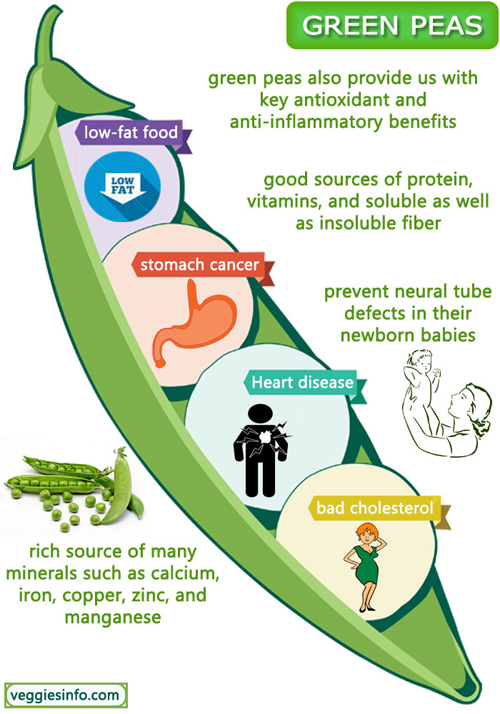
06. Brussels sprouts
Brussels sprouts look like a miniature cabbage with limp texture and bitter flavor. It is enriched with Vitamin K, Vitamin C, fiber and Vitamin A. It also contains a fair amount of potassium, Vitamin B6, iron, magnesium and calcium. The compounds in Brussels sprouts reduce the risk of chronic disease and may help to manage inflammatory conditions like rheumatoid arthritis, type 2 diabetes, obesity and inflammatory bowel disease. Brussels sprouts act as a natural detoxifier to eliminate the potentially damaging chemicals. It maintains healthy bones, blood sugar level and reduces the risk of ulcer.
It can be roasted, boiled, steamed and microwaved to enjoy them in a main course or side dishes.
- Effective immune modulator, Anti-Bacterial and Anti-Viral Agent.
- Good source of fiber, manganese, potassium, choline, and B vitamins.
- Lower cholesterol.
- One cup of Brussels sprouts will provide 195% of vitamin K, 125% of vitamin C, 10% or more of vitamin A, vitamin B-6, folate, potassium and manganese.
- Maintaining vision.
- Managing diabetes.
- Improving Bone Health.
- Fighting Cancer.
The Total Annual Production of Brussel Sprouts in the U.S is almost 70 million Pounds.
Brussel sprouts form a key ingredient in weight loss programmes; this is due to its low-glycemic properties. A portion of 100 grams of brussel sprouts consist of only 45 calories. Apart from the low calorie it contains 3.38 grams of protein and 3.80 grams of dietary fibre and zero cholesterol. Brussel sprouts belong to the cabbage family and they are vested with the power of curing and preventing cancer because of their cruciferous nature. Also the anti inflammatory property helps in preventing cancer. Leafy vegetables like brussel sprouts are a source of folate which is also vitamin B that is present in large amount in brussel sprouts help in strengthening the spinal cord and prevents birth defects such as spina bifida. Brussel sprout is known to manage diabetes and improve vision because of its vitamin c that helps in prevent UV light damage. The anti oxidant property possessed by brussel sprouts because of high vitamin C content helps in getting a younger looking skin and a flawless complexion by its direct oral intake or even if applied as a cream on the face. Vitamin K helps in bone growth and strengthening thereby reducing the risk of fractured bones. The risk of chronic diseases like obesity, diabetes and heart diseases can all be brought under control or be treated on consumption of this wonder food.
| Principle | Nutrient Value | Percentage of RDA |
|---|---|---|
| Energy | 43 Kcal | 2% |
| Carbohydrates | 8.95 g | 7% |
| Protein | 3.38 g | 6% |
| Total Fat | 0.30 g | 1% |
| Cholesterol | 0 mg | 0% |
| Dietary Fiber | 3.80 g | 10% |
| Vitamins | ||
| Folates | 61 µg | 15% |
| Niacin | 0.745 mg | 4.5% |
| Pantothenic acid | 0.309 mg | 6% |
| Pyridoxine | 0.219 mg | 17% |
| Riboflavin | 0.90 mg | 7% |
| Thiamin | 0.139 mg | 13% |
| Vitamin A | 754 IU | 25% |
| Vitamin C | 85 mg | 142% |
| Vitamin K | 177 µg | 147% |
| Electrolytes | ||
| Sodium | 25 mg | 1.5% |
| Potassium | 389 mg | 8% |
| Minerals | ||
| Calcium | 42 mg | 4% |
| Copper | 0.70 mg | 8% |
| Iron | 1.40 mg | 17.5% |
| Magnesium | 23 mg | 6% |
| Manganese | 0.337 mg | 15% |
| Phosphorus | 69 mg | 10% |
| Selenium | 1.6 µg | 3% |
| Zinc | 0.42 mg | 4% |
| Phyto-nutrients | ||
| Carotene-a | 6 µg | — |
| Carotene-ß | 450 µg | — |
| Crypto-xanthin-ß | 0 µg | — |
| Lutein-zeaxanthin | 1590 µg | — |
The healthiest way of cooking brussel sprouts is by cutting them into halves and steaming them. This method will help you retain the flavours and also the nutrition of the food. Stir-frying, barbeque or even microwaving can be methods opted to cook brussel sprouts. Often added in salads with red onions, goat cheese tossed in balsamic vinegar make a nice snack for brunch. Steamed Brussels with honey and mustard sauce is the healthiest and easiest recipe. Usually served as a side dish; brussel sprouts make a nice addition to cold salad.
Apart from all the nutritional value that brussel sprouts hold if overcooked it tends to give a foul smell and a bad taste. This is because of high sulphur content present in this food. Thus care needs to be taken while cooking.
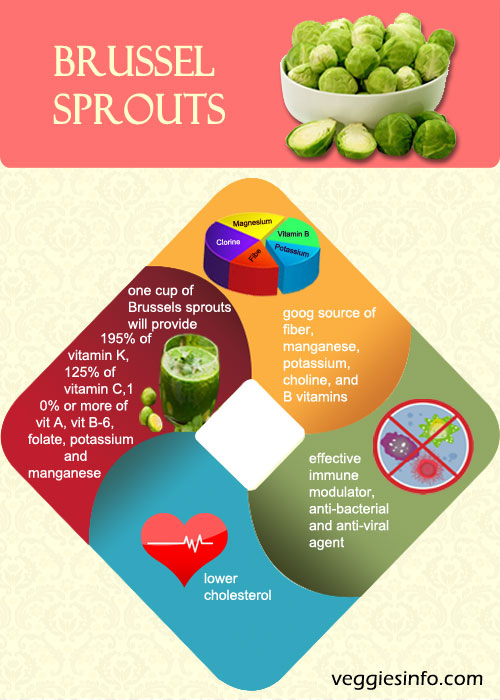
05. Garlic
Garlic is an herb related to the onion family. The white garlic bulb has a segment called clove. It has a distinctive flavor and aroma which makes it a popular seasoning.
It contains Vitamin B6, manganese, Vitamin C, selenium and fiber. Garlic also has a decent amount of calcium, copper, potassium, iron and Vitamin B1. Garlic has the potential to reduce the severity of flu, common cold, heart diseases and Alzheimer's disease. The active compounds in garlic can reduce blood sugar and cholesterol level.
Garlics are used to flavor foods and to treat various medical conditions.
- Garlic is also a reliable source of Selenium.
- Manganese: 23% of the RDA.
- Vitamin B6: 17% of the RDA.
- Vitamin C: 15% of the RDA.
- Selenium: 6% of the RDA.
- Fiber: 1 gram.
- High dose of garlic extract (2.56 grams per day) can reduce the number of days sick with cold or flu by 61%.
- Helps keep bacterial and viral infections at bay.
- Healing effect on your circulatory, digestive and immunological systems.
- Help in lowering blood pressure, detoxification.
- Helps prevent the formation of clots in the body.
- Protect you against frequent colds and bouts of sore throat.
- Helps beat iron deficiency and anemia.
- Helps relieve pain caused due to a toothache.
- Help you to lose weight.
- Benefits against coronary artery diseases, infections and cancers.
It grows in bulbs which vary in size and colors which can be white, pink or purple, the actual garlic lies within the bulb and is contained inside segments known as cloves.
Raw garlic contains an antibiotic which can have a very powerful effect on the body. Eaten raw, it can help to fight against serious diseases such as cancer and stroke. The Garlic health benefits are outstanding!
This is also a magic food, owing to its nutrition value and medicinal property. 6 cloves of garlic consist of 27 calories which is remarkably low and makes its place in the diet chart of every diet concerned person. It is known to contain a compound known as allin or allicin that is responsible for smooth functioning of the cardiovascular system of our body. These enzymes separate the good cholesterol from the bad cholesterol and use the good cholesterol for the functioning of the body, it prevents in clogging pores and maintains blood pressure levels. It is considered to known as wonder food for people diagnosed with heart and blood pressure problems. It is often suggested as a must have for people with depression as it stimulates good mood in them. Researchers have proven it in their studies that has anti cancer properties that will keep cancer at bay on regular consumption. Indian believed in garlic as a medicine even before the advent of antibiotics, the bulbs of garlic were used to relieve digestive disorders and treat fever during early days.Its Central say that Studies have known that garlic can have a powerful antioxidant effect. Antioxidants help to protect the body against damaging "free radicals".It is one of the most effect antibiotic plants available, acting on bacteria, viruses and parasites, and was used during both world wars to disinfect wounds.
| Principle | Nutrient Value | Percentage of RDA |
|---|---|---|
| Energy | 149 Kcal | 7.5% |
| Carbohydrates | 33.06 g | 25% |
| Protein | 6.36 g | 11% |
| Total Fat | 0.5 g | 2% |
| Cholesterol | 0 mg | 0% |
| Dietary Fiber | 2.1 g | 5.5% |
| Vitamins | ||
| Folates | 3 µg | 1% |
| Niacin | 0.700 mg | 4% |
| Pantothenic acid | 0.596 mg | 12% |
| Pyridoxine | 1.235 mg | 95% |
| Riboflavin | 0.110 mg | 8% |
| Thiamin | 0.200 mg | 17% |
| Vitamin A | 9 IU | <1% |
| Vitamin C | 31.2 mg | 52% |
| Vitamin E | 0.08 mg | 0.5% |
| Vitamin K | 1.7 µg | 1.5% |
| Electrolytes | ||
| Sodium | 153 mg | 10% |
| Potassium | 401 mg | 8.5% |
| Minerals | ||
| Calcium | 181 mg | 18 % |
| Copper | 0.299 mg | 33% |
| Iron | 1.70 mg | 21% |
| Magnesium | 25 mg | 6% |
| Manganese | 1.672 mg | 73% |
| Phosphorus | 153 mg | 22% |
| Selenium | 14.2 µg | 26% |
| Zinc | 1.160 mg | 10.5% |
| Phyto-nutrients | ||
| Carotene-ß | 5 µg | — |
| Crypto-xanthin-ß | 0 µg | — |
| Lutein-zeaxanthin | 16 µg | — |
The culinary use of garlic sees no geographic boundaries, the Chinese use this heavily in their cuisine as it brings out the heat and the flavours of the food. Italians use it in preparing various sauces and base for pastas and pizzas, bread an Italian accompaniment with pasta is enjoyed a lot because of its garlic flavour. In India this is pounded to add in pickles and curries. Garlic butter and garlic dips are something that is found on every supermarket shelf.
This is a wonder food that can heal the body while tasting great.
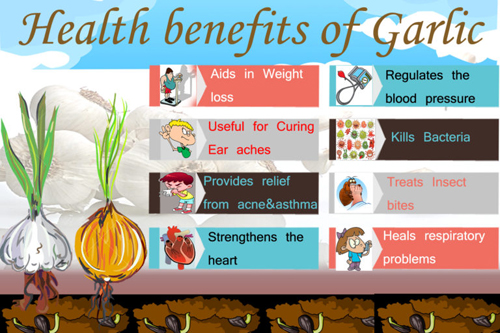
04. Broccoli
Broccoli is a green vegetable topped with round florets that resembles a cauliflower. It has earthy flavour with a hint of bitterness. Broccoli is popular for its impressive nutritional profile.
Broccoli is an excellent source of Vitamin C, Vitamin K, folate, Vitamin A and fiber. It also has a moderate amount of potassium, phosphorus, selenium and protein. It has the antioxidant, anticancer and anti-inflammatory properties. It promotes heart health, healthy digestion, controls blood sugar and slows the aging process. Broccoli may support dental health, brain health and promote healthy bones and joints.
Broccoli can be eaten raw and can also be served after boiling, frying, steaming and microwaving.
- Contains magnesium, phosphorus, a little zinc and iron.
- Powerful antioxidant.
- This is high in Vitamins C, A, and folate and also soluble fiber.
- Helpful in detoxifying the body from harmful chemicals as well as alcohol.
- Cancer prevention.
- Cholesterol reduction.
- Reducing allergic reaction and inflammation.
- Bone and heart health.
- Blood Pressure and Kidney Health.
- Anti-Aging and Immune System Health.
- Reduces the risk of coronary heart disease and death in postmenopausal women.
- Prevent viral and harmful activities of bacteria.
- Best for pregnant women and Avoiding the Defects Of Birth.
- Healthy eye and protection of skin.
Broccoli originated in Italy off of the Mediterranean. It has been eaten there since the time of the ancient Romans in the 6th Century BC.
It gives you healthy bones because it contains calcium in a high amount which is more than any other vegetables. As we know calcium is helpful to build bone mass.
Great tasting nutrition, that's what broccoli is known for Broccoli lovers are all over the world. This cruciferous vegetable has the following nutrients. It is a great source of vitamin K it is essential for blood clotting in the body and also helps in getting stronger bones preventing osteoporosis. It is a known fact that eating non starchy vegetables leads to cancer prevention and it is a proven fact that eating broccoli can help you prevent and fight cancer. Breast cancer, ovarian cancer, bladder cancer and colon cancer are said to be prevented when one consumes broccoli. Keeping true to its dietary fibre this veggie helps in digestive support and relives the body of any digestive disorder. The dietary fibre protects the lining on the stomach and prevents and bacterial growth inside the stomach.It supports a healthy heart and a healthy hearts simply indicates a good lifestyle. The anti inflammatory property present in cruciferous plants makes it heart friendly and thus avoids absorption of bad cholesterol and thinning of arteries thus preventing cardiovascular disease and keeping heart attacks at bay. Apart from the ones mentioned above broccoli also forms a good source of vitamin A that helps treating sun burnt skin. All in all this food has no fat, low in sodium and contains only 31 calories per serving.
| Principle | Nutrient Value | Percentage of RDA |
|---|---|---|
| Energy | 34 Kcal | 1.5% |
| Carbohydrates | 6.64 g | 5% |
| Protein | 2.82 g | 5% |
| Total Fat | 0.37 g | 1% |
| Cholesterol | 0 mg | 0% |
| Dietary Fiber | 2.60 g | 7% |
| Vitamins | ||
| Folates | 63 µg | 16% |
| Niacin | 0.639 mg | 4% |
| Pantothenic acid | 0.573 mg | 12% |
| Pyridoxine | 0.175 mg | 13% |
| Riboflavin | 0.117 mg | 9% |
| Thiamin | 0.071 mg | 6% |
| Vitamin A | 623 IU | 21% |
| Vitamin C | 89.2 mg | 149% |
| Vitamin E | 0.17 mg | 1.5% |
| Vitamin K | 101.6 µg | 85% |
| Electrolytes | ||
| Sodium | 33 mg | 2% |
| Potassium | 316 mg | 7% |
| Minerals | ||
| Calcium | 47 mg | 5% |
| Copper | 0.049 mg | 5.5% |
| Iron | 0.73 mg | 9% |
| Magnesium | 21 mg | 5% |
| Manganese | 0.210 mg | 9% |
| Selenium | 2.5 µg | 5% |
| Zinc | 0.41 mg | 4% |
| Phyto-nutrients | ||
| Carotene-ß | 361 µg | — |
| Crypto-xanthin-ß | 1 µg | — |
| Lutein-zeaxanthin | 1403 µg | — |
A cup of broccoli is equal to the proteins gained from a cup of rice with half the amount of calories. This way substituting broccoli with rice can be a good option for all weight watchers. Boiling broccoli will drain up to 90% of all the nutrients so instead of boiling it one should opt for microwaving, steaming or even stir frying. Eating broccoli raw is very nutritious, add broccoli to your salad and make it a healthy meal. Broccoli is often added to Chinese soups and gravies as it is a vegetable highly consumed in China. Italian pasta and casseroles also feature broccoli as they are not only flavoursome but highly nutritious.
This cabbage relative is a power house of nutrition infused with flavour. Eating tasty is new eating healthy.
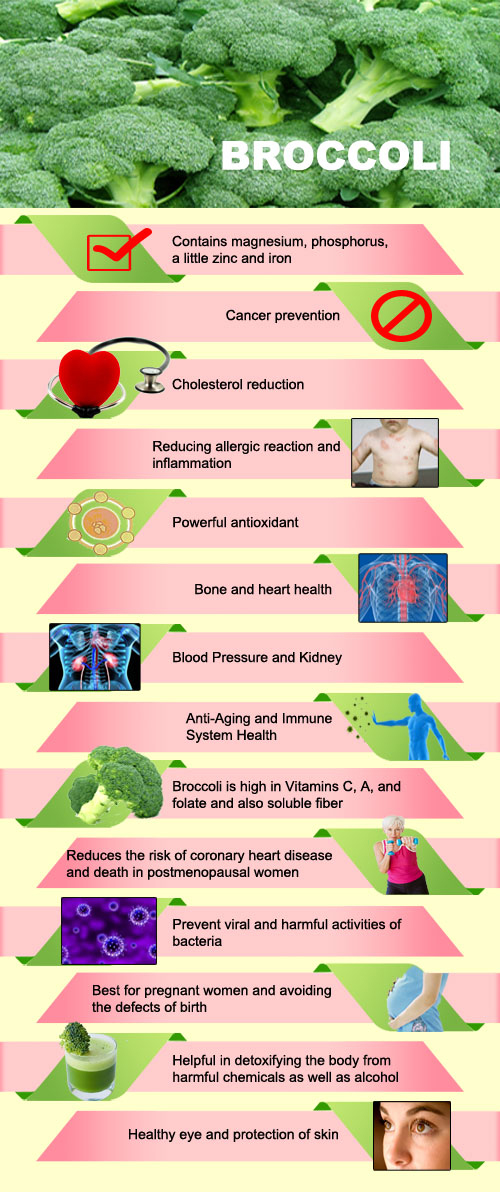
03. Carrot
Carrot is a root vegetable with the slight sweet and earthy flavor, but the taste can vary based on the color, size and area where it is grown. They are commonly available in orange color, but the purple, red, white and yellow varieties also exist.
Carrots are loaded with beta-carotene, fiber, Vitamin K1, biotin, potassium and antioxidants. The high content of beta-carotene promotes good vision and improves the function of the immune system. It has the potential to reduce the risk of degenerative ailments and certain types of cancer. They are weight loss friendly food and help to maintain the cholesterol level.
Carrots can be enjoyed fresh as a crunchy snack or it can be roasted, boiled, fried and made into juice.
- The water content can vary from around 86-95%, and the edible portion consists of around 10% carbohydrates.
- Carrots contain very little fat and protein.
- One medium, raw carrot (61 grams) contains 25 calories, with only 4 grams of digestible carbs.
- Improves vision.
- Slows down aging.
- Protects the skin from sun damage.
- Prevents premature wrinkling, acne, dry skin, pigmentation, blemishes, and uneven skin tone.
- Helps prevent infection.
- Protects teeth and gums.
- Carrots are rich in alkaline elements which purify and revitalize the blood.
- Improve the appearance of skin, hair, nails.
- Preventing gastric ulcers and digestive disorders.
- kill harmful germs in the mouth and Prevent Tooth Decay.
- Improve the quality of breast milk in mothers.
- Growth of healthy bones and teeth.
The First Carrots that were grown were purple in color! Orange carrots later originated from Holland. Carrots are also available in yellow and white colors.
Carrots are very healthy and contain varied vitamins, carotene and other essential nutrients such as potassium, calcium, iron and zinc.
The ultimate food for good health is carrots, high source of nutrients and minerals they are rightly known as power house of energy. One serving of chopped carrots will provide 25 calories, 3 grams of sugar, 6 grams of carbohydrates and 1 gram of proteins. Carrots are rich in beta- carotene a phyto-nutrient that is derived from the plants; this helps in getting the orange colour of the carrots. Anti oxidants such as Vitamin c is found in abundance in carrots and helps the body to prevent cancer. It is justified in many studies and medical examinations conducted that carrot juice inhibits the growth of cancer cells and also prevents colon cancer. One of the most popular known health benefits is consuming carrots for good vision. People consuming carrots regularly are lesser prone to glaucoma as proven by medical research. Way to a good heart is a good diet rich in anti oxidant properties; carrots are known for their antioxidant property that aids in unclogging of the arteries thus promoting good cardiovascular functioning.
| Principle | Nutrient Value | Percentage of RDA |
|---|---|---|
| Energy | 41 Kcal | 2% |
| Carbohydrates | 9.58 g | 7% |
| Protein | 0.93 g | 1.5% |
| Total Fat | 0.24 g | 1% |
| Cholesterol | 0 mg | 0% |
| Dietary Fiber | 2.8 g | 7% |
| Vitamins | ||
| Folates | 19 µg | 5% |
| Niacin | 0.983 mg | 6% |
| Pantothenic acid | 0.273 mg | 5.5% |
| Pyridoxine | 0.138 mg | 10% |
| Riboflavin | 0.058 mg | 4% |
| Thiamin | 0.066 mg | 6% |
| Vitamin A | 16706 IU | 557% |
| Vitamin C | 5.9 mg | 10% |
| Vitamin K | 13.2 µg | 11% |
| Electrolytes | ||
| Sodium | 69 mg | 4.5% |
| Potassium | 320 mg | 6.5% |
| Minerals | ||
| Calcium | 33 mg | 3% |
| Copper | 0.045 mg | 5% |
| Iron | 0.30 mg | 4% |
| Magnesium | 12 mg | 3% |
| Manganese | 0.143 mg | 6% |
| Phosphorus | 35 mg | 5% |
| Selenium | 0.1 µg | <1% |
| Zinc | 0.24 mg | 2% |
| Phyto-nutrients | ||
| Carotene-a | 3427 µg | — |
| Carotene-ß | 8285 µg | — |
| Crypto-xanthin-ß | 0 µg | — |
| Lutein-zeaxanthin | 256 µg | — |
One vegetable and in numerous uses, one can eat carrots in every course of the meal. Carrots are usually added to fresh green salad as they are crunchy light and flavoursome.Soups made out of carrots are creamy and light and also helps in recovering from cold and flu. Grated carrots are used as a stuffing in rolls and wraps. Chinese people makes use of carrot widely in their food; adding them in noodles, rice or even pan fried curries they are present in all. One of the most sought after delicacy carrot cake is a dessert and is made largely out of carrots and cream.
Children spend their childhood watching their favourite animated cartoon character Bugs bunny get energised on carrots thus creating a perception in their young minds that this vegetable gives you all the power.
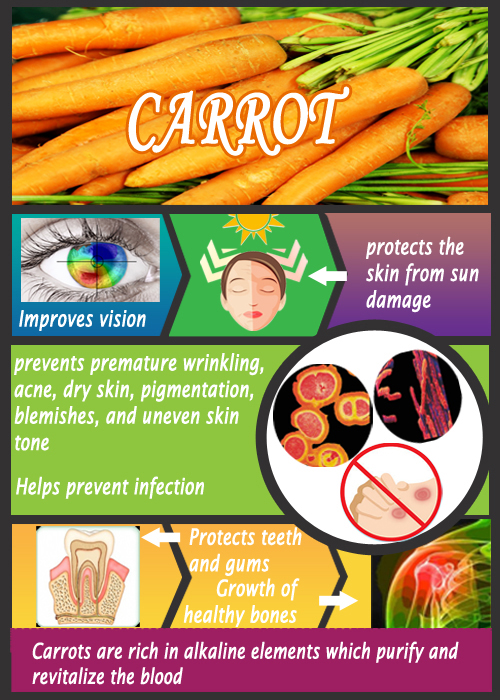
02. Spinach
Spinach is leafy green vegetable spinach, which is consideredsuper food as it is packed with nutrients. Raw spinach is not bitter while the wilted spinach tends to take on a bitter flavor.
Spinach is rich in insoluble fiber, folic acid, iron, calcium, Vitamin A, C and Vitamin K1. Spinach may help to prevent constipation, cancer, blood pressure and diabetes. It promotes your eye health, skin health and immune system. Itcan be added to salad when raw and they can be eaten as smoothies, pasta sauce and stir-fries.
- This leaves are an Excellent Source Of Vitamin K.
- 100 g of fresh greens provides 402% of daily vitamin-K requirements.
- Fresh 100 g of spinach's contains about 25% of daily intake of iron.
- Diabetes management.
- Cancer prevention.
- Asthma prevention.
- Lowering blood pressure.
- Bone health.
- Promotes regularity Healthy skin and hair.
The Spinach growing town of Crystal City, Texas, erected a Statue of Popeye in 1937.
Spinach may slow the age-related decline in brain function. So, eat your greens and keep working those crossword puzzles to keep your brain young and agile.
This family is well known for its high nutrition value; a cup of raw spinach's consists of 23 calories and 2.9 grams ofprotein which constitutes to about 5% of protein nutrition. This leafy green is rich 187% vitamin A, 46% of Vitamin C and Vitamin K. Vitamin A is essential for good eyesight, aging adults should consider adding kale to their daily diets. Vitamin C that is rich in anti oxidants and it helps in smooth functioning of the body cells. On the contrary Kale is also known as the richest source of vitamin c as kale consists 3 times more proteins than spinach and more vitamin c than an orange. It is a cruciferous plant and like its relative plants it is vested with anti cancer properties and anti oxidant properties that prevents the body from falling prey to life endangering diseases such as breast cancer, prostate cancer and colon cancer. High levels of stress and stress related problems can be kept under control by adding spinach as a part of one's daily intake. Apart from hosting these vital nutrients it also has the benefit of various other nutrients such as iron, manganese, magnesium, lutein and zeaxanthin are a few to mention.
| Principle | Nutrition Facts | Percentage Of RDA |
| Energy | 23 Kcal | 1% |
| Carbohydrates | 3.63 g | 3% |
| Protein | 2.86 g | 5% |
| Total Fat | 0.39 g | 1.5% |
| Cholesterol | 0 mg | 0% |
| Dietary Fiber | 2.2 g | 6% |
| Vitamins | ||
| Folates | 194 µg | 48.5% |
| Niacin | 0.724 mg | 4.5% |
| Pantothenic acid | 0.065 mg | 1% |
| Pyridoxine | 0.195 mg | 15% |
| Riboflavin | 0.189 mg | 14.5% |
| Thiamin | 0.078 mg | 6.5% |
| Vitamin A | 9377 IU | 312% |
| Vitamin C | 28.1 mg | 47% |
| Vitamin E | 2.03 mg | 13.5% |
| Vitamin K | 482.9 µg | 402% |
| Electrolytes | ||
| Sodium | 79 mg | 5% |
| Potassium | 558 mg | 12% |
| Minerals | ||
| Calcium | 99 mg | 10% |
| Copper | 0.130 mg | 14% |
| Iron | 2.71 mg | 34% |
| Magnesium | 79 mg | 20% |
| Manganese | 0.897 mg | 39% |
| Zinc | 0.53 mg | 5% |
| Phyto-nutrients | ||
| Carotene-ß | 5626 µg | — |
| Crypto-xanthin-ß | 0 µg | — |
| Lutein-zeaxanthin | 12198 µg | — |
Abundant flavonoids in spinach act as antioxidants to keep cholesterol from oxidizing and protect your body from free radicals, particularly in the colon. The folate in spinach is good for your healthy cardiovascular system, and magnesium helps lower high blood pressure. Studies also have shown that spinach helps maintain your vigorous brain function, memory and mental clarity.Studies have shown that consumption of green leafy vegetables such as spinach may slow the age-related decline in brain function. So, eat your greens and keep working those crossword puzzles to and agile.
The healthiest way of cooking spinach is by boiling it and then consuming it in order to remove all the bacteria and other compounds feeding on it. This can be added to make pesto sauce for pasta, can be added as a stuffing in ravioli, it can be used to make cold dips to eat with bread sticks and vegetables, add spinach as a base to lasagne to give it an healthy twist. The classic dish made out of spinach's is the spinach salads or may be spinach cooked in olive oil and pine nuts served as a side dish alongside risotto or a creamy soup to give a crunch to the rich texture.
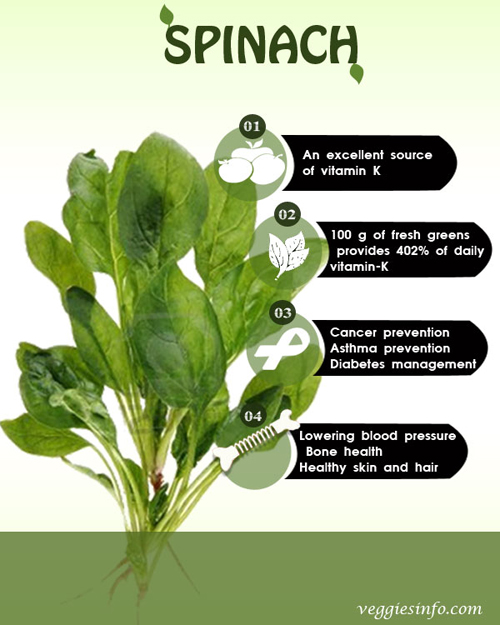
01. Asparagus
Asparagus is a nutrient dense vegetable known for its health benefits. The succulent stalk has slender pears that come in different colors including white, green and purple. The fresh asparagus has salty, bitter and earthy flavor similar to broccoli.
Asparagus is a good source of Vitamin K, folate, Vitamin A and Vitamin C. It also has an average amount of potassium, phosphorus, fiber, protein and Vitamin E. It is low in calories and high in nutrients. High folate content in asparagus is vital for a healthy pregnancy and DNA formation. Asparagus has a potential to reduce the risk of chronic diseases like cancer and improve digestive health. It helps to maintain blood pressure and body weight. Asparaguscan be naturally added in salads, stir-fries, omelets, pastas and makes an excellent side dish.
- Used as an anodyne, aphrodisiac and galactogogue.
- The roots are useful in nervous disorders, dyspepsia, tumors, scalding of urine, throat infections, tuberculosis, cough bronchitis and general debility.
- Helps with nervousness, pain, restless sleep, disturbing dreams and people with weak emotional and physical heart.
- The herb is useful for treating anorexia, insomnia, hyperactive children and people who are under-weight.
- Asparagus is considered as a rejuvenatingFemale Tonic for overall health and vitality.
- Satawari is used for treating sexual debility, infertility in both the sexes.
- Increases milk secretion during lactation.
- The herb is useful in pregnancy for threatened abortion.
- Useful for ulcerative disorders of stomach and Parinama Sula.
- The paste of fresh leaves is used to apply on the burning sensation of the skin in smallpox and bullae.
- Juice of the roots, mixed with honey, helps in reducing the burning sensation pain in tumors,due to pitta.
- Effective demulcent for the dry and inflamed membranes of the lungs, stomach, kidneys and sexual organs.
- The herb is also an extremely nutritious tonic for women from menarche to menopause.
- Increases the urinary output,it is beneficial in urinary stones and Dysurea.
- It is anabolic to uterus and helpful in uterine hypoplasia in young girls.
- Improves uterine growth, mitigates dysmenorrheal and menorrhagia, augments fertility imparts anabolic properties.
- Improve eyesight.
- Decreases the frequency of paroxysms.
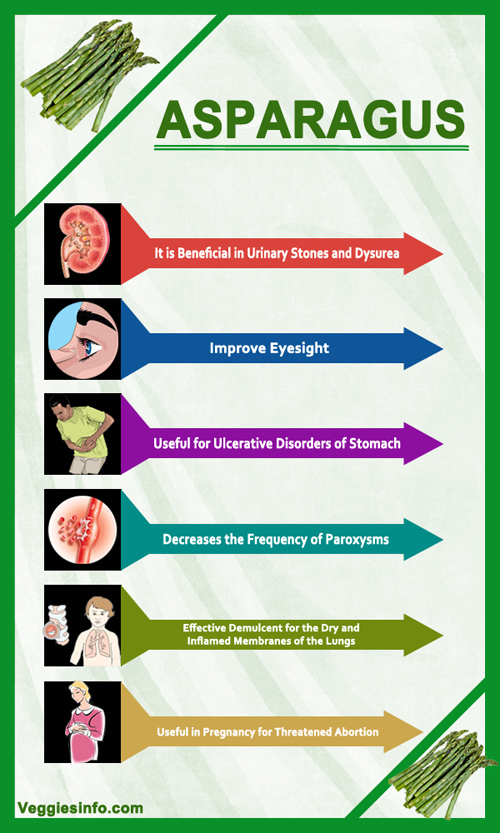
Vegetables are an essential part of any kids and adult's diet, no matter what their age!
Very beneficial as it lifts our mood and helps us to cope with Stress.
Known as the most nutritionally well balanced vegetables in existence It is a wholesome vegetable that nourishes your body with vital nutrient. It is rich in folic acid, Folacin plays a pivotal role in prevention of neural tube defects such as spina bifida, that causes paralysis and death in 2500 babies every year. It is low in calorie content with only 20 calories per 5.3 ounce of serving i.e 4 calories per spear. A 5.3 oz of serving provides 60% of the recommended nutrients used for blood cell formation, growth and prevention of liver disease. Asparagus grown in Himalayan regions is used to make ayurvedic medicine used to cure digestive disorders.
| Principle | Nutrient Value | Percentage of RDA |
|---|---|---|
| Energy | 20 Kcal | 1% |
| Carbohydrates | 3.38 g | 2.5% |
| Protein | 2.20 g | 4% |
| Total Fat | 0.12 g | 0.5% |
| Cholesterol | 0 mg | 0% |
| Dietary Fiber | 2.1 g | 5.5% |
| Vitamins | ||
| Folates | 52 µg | 13% |
| Niacin | 0.978 mg | 6% |
| Pantothenic acid | 0.274 mg | 5% |
| Pyridoxine | 0.091 mg | 7% |
| Riboflavin | 0.141 mg | 11% |
| Thiamin | 0.143 mg | 12% |
| Vitamin C | 5.6 mg | 9% |
| Vitamin A | 756 IU | 25% |
| Vitamin E | 1.13 mg | 7.5% |
| Vitamin K | 41.6 µg | 35% |
| Electrolytes | ||
| Sodium | 2 mg | <1% |
| Potassium | 202 mg | 4% |
| Minerals | ||
| Calcium | 24 mg | 2.5% |
| Copper | 0.189 mg | 21% |
| Iron | 1.14 mg | 14% |
| Magnesium | 14 mg | 1% |
| Manganese | 0.158 mg | 7% |
| Phosphorus | 52 mg | 7.5% |
| Selenium | 2.3 µg | 4% |
| Zinc | 0.54 mg | 5% |
| Phyto-nutrients | ||
| Carotene-ß | 449 µg | |
| Carotene-a | 9 µg | |
| Lutein-zeaxanthin | 710 µg |
It is renowned for its anti cancer benefits as a result of its very strong anti –inflammatory and anti oxidant property it shows signs of reducing the risk of chronic cancer. This spear shaped vegetable is also known for slowing down aging process and reduces the cell damage. It has abundance of Riboflavin which helps in reducing the frequency of migraine headaches and how long they last in people who suffer from it. Apart from its health benefits asparagus is also considered to be one of the top food aphrodisiac. Due to its rich vitamin c content asparagus is considered to keep sperm healthy as well as increase its volume and mobility.
This vegetable is so profound that it has a museum dedicated to its being. European Asparagus museum located in Schrobenhausen, Bavaria, Germany that captures everything about Asparagus from its history to its cultivation everything under one roof.

